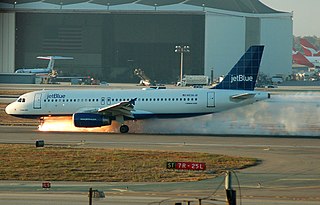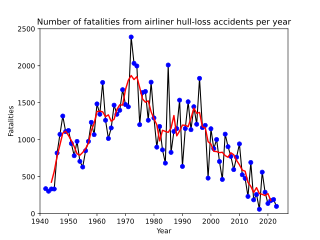 W
WAn aviation accident is defined by the Convention on International Civil Aviation Annex 13 as an occurrence associated with the operation of an aircraft, which takes place from the time any person boards the aircraft with the intention of flight until all such persons have disembarked, and in which a) a person is fatally or seriously injured, b) the aircraft sustains significant damage or structural failure, or c) the aircraft goes missing or becomes completely inaccessible. Annex 13 defines an aviation incident as an occurrence, other than an accident, associated with the operation of an aircraft that affects or could affect the safety of operation.
 W
WAn emergency landing is a prioritised landing made by an aircraft in response to an emergency containing an imminent or ongoing threat to the safety and operation of the aircraft or involving a sudden need for a passenger or crew on board to be on land, such as a medical emergency.
 W
WA forced landing is a landing by an aircraft made under factors outside the pilot's control, such as the failure of engines, systems, components or weather which makes continued flight impossible. For a full description of these, see article on emergency landing. However the term also means a landing that has been forced by interception.
 W
WA fume event occurs when bleed air used for cabin pressurization and air conditioning in a pressurized aircraft is contaminated by fluids such as engine oil, hydraulic fluid, anti-icing fluid, and other potentially hazardous chemicals. Turbine engine oil is an irritant and contains neurotoxic chemicals such as tricresyl phosphate. The aviation industry claims that engine oil does not contain sufficient quantities of such chemicals to cause long-term damage. However, there is some historical evidence that would seem to contradict this statement. In 1959, over 10,000 people in Morocco were paralyzed or otherwise affected after ingesting small quantities of tricresyl phosphate in their cooking oil. Unlike tricresyl phosphate, hydraulic fluid — although non-toxic in small quantities — is extremely irritating to the eyes and skin, which creates a hazard to pilots during a fume event but causes no lasting damage. Deicing fluid has a strong smell but is not very irritating or toxic if inhaled.
 W
WA hull loss is an aviation accident that damages the aircraft beyond economical repair, resulting in a total loss. The term also applies to situations in which the aircraft are missing, the search for their wreckage is terminated or when the wreckage is completely inaccessible.
 W
WA runway excursion is a runway safety incident where an aircraft makes an inappropriate exit from the runway. Runway excursions include runway overruns, where an aircraft is unable to stop before it reaches the end of the runway. Runway excursions can happen because of pilot error, poor weather, or a fault with the aircraft.
 W
WOn the evening of 27 April 1993, a DHC-5 Buffalo transport aircraft of the Zambian Air Force crashed into the Atlantic Ocean shortly after taking off from Libreville, Gabon. The flight was carrying most of the Zambian national football team to a FIFA World Cup Qualifier against Senegal in Dakar. All 25 passengers and five crew members were killed. The official investigation concluded that the pilot had shut down the wrong engine following an engine fire. It also found that pilot fatigue and a faulty instrument had contributed to the accident.